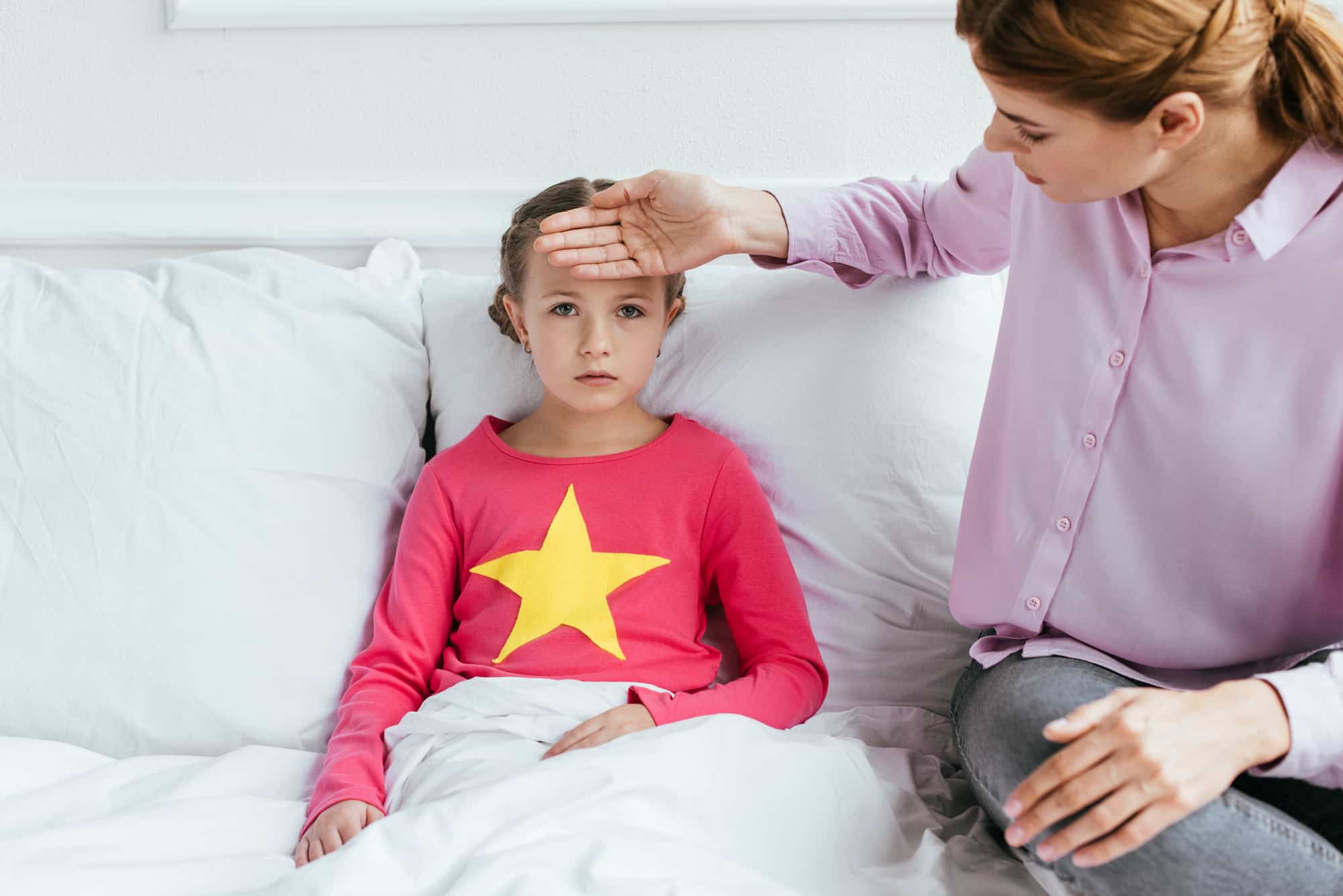
20 Jun What should I do about my child’s fever?
If you are a parent, you have been through this scenario…. Your child is hot, flushed, glassy-eyed and obviously not feeling well. Your diagnosis is fever!! You are very concerned and even a little panic sets in. After all, you have been trained to think of fever as something to be treated and even feared. Let’s take a step back and calmly look at this thing we call a fever.
We’ve all been taught that “normal” body temperature is 98.6 F, right? WRONG!! 98.6 F only represents an average of the “normal” body temperature. When you look at the population, you quickly realize that what is normal for you or your child may not be what is normal for everybody. In fact, your child’s temperature can hover anywhere between 97 and 100 F and still be considered “normal”.
Fever is simply an increase in heat. Normal body heat, aka “fever” is the result of your child’s body working as it was designed and programmed to function under the perfect control of the nervous system. So the question remains, “What should I do about my child’s fever”?
To answer that question appropriately, let’s first take a step back and see what is actually happening inside your body. To help your child recover when they are fighting a flu bug or other infection, two things happen.
First, the nervous system commands an increase in heat production in order to literally “burn” the invading germ, which can only survive at a “normal” body temperature. Therefore, any increase in heat above body temperature kills the invading germs… This is a good thing!!
Second, as a result of orders from the nervous system, many-body activities speed up. Respiration increases, the heart rate rises in order to pump blood faster, breathing quickens, the skin becomes moist and clammy and the child begins to shiver. The extra work produces heat which we diagnose as a fever.
All this activity has a purpose: to eliminate the invading germ. This does not necessarily mean that your child is “sick”. While we view fever as a symptom of sickness, it is actually a function of a healthy individual. The body is doing exactly what it has been naturally programmed to do. I’d even go as far as saying that fever is an expression of health.
But as a loving parent, it is at this point that you feel you have to do something. Not necessarily. The most important things to do in the event of a “fever” is to understand why it is happening, provide supportive care and allow your child’s body to do what it needs to do with no interference.
Oftentimes parents will ask their doctor, “how high do you let the fever get, or how high is too high?” There has been mounting evidence that suggests that the “height” of fever has no bearing on the seriousness of their condition and there is absolutely no clinical evidence to suggest that high fevers cause convulsions or brain damage. I mean think about that for a second… Why would the nervous system increase the temperature to a level that will injure itself?
On its own, a high fever is not critical. However, when there are other signs of sickness, it could be an indicator of a developing serious condition that warrants your attention.
If your child is less than one year old and has a fever with the presence of any of the following signs, you should seek the advice of your health care provider:
1. The child is in severe pain and cannot be comforted
2. The child is anxious or lethargic
3. The child whines continuously
4. The child cannot retain fluids and/or has diarrhea
5. Has difficulty breathing, urinating, or swallowing
6. Has an unexplained rash and a pulse rate of over 120 beats per minute
So why do you have to take a child’s temperature when he is feverish? You don’t!! In fact, an increasing number of physicians now feel that taking a child’s temperature is an unnecessary ritual. So why do we do it? Many trace this action back to a cleverly crafted marketing campaign by the makers of fever-reducing drugs. If they can train a parent to fear the fever and think of it as something that must be treated from the very beginning, the sales of the medications would skyrocket!!
Many are beginning to lean more to the stance that lowering the child’s body temperature during a fever episode is neither necessary nor wise. Fever is not the problem, in fact, it’s the body’s beautiful attempt at a solution. Embrace the fever and comfort your child but try not to jump the gun on the administration of medication to reduce the temperature. Let the body do its thing and more times than not, the episode will be shorter than it would have been if it was treated.
At our practice, we see so many children and love educating the parents on health. Dr. Ring firmly believes that every human being on the planet would be able to live a healthier life if they were under the care of a chiropractor to ensure your body was functioning optimally.
While chiropractors have great success treating pain and other symptoms, an often overlooked benefit to chiropractic adjustments is the increased function of the immune system by increasing the function of the nervous system. We believe that every child should be checked by a chiropractor at birth and throughout childhood to ensure the proper development of the nervous system.
If you have any questions about chiropractic for your family, please give us a call at 918-940-4630 to schedule your complimentary consultation. We would love to answer the questions you have regarding chiropractic care for your family. We hope you will give Dr. Ring and Eastern Oklahoma Chiropractic a chance to help you along your health journey.

